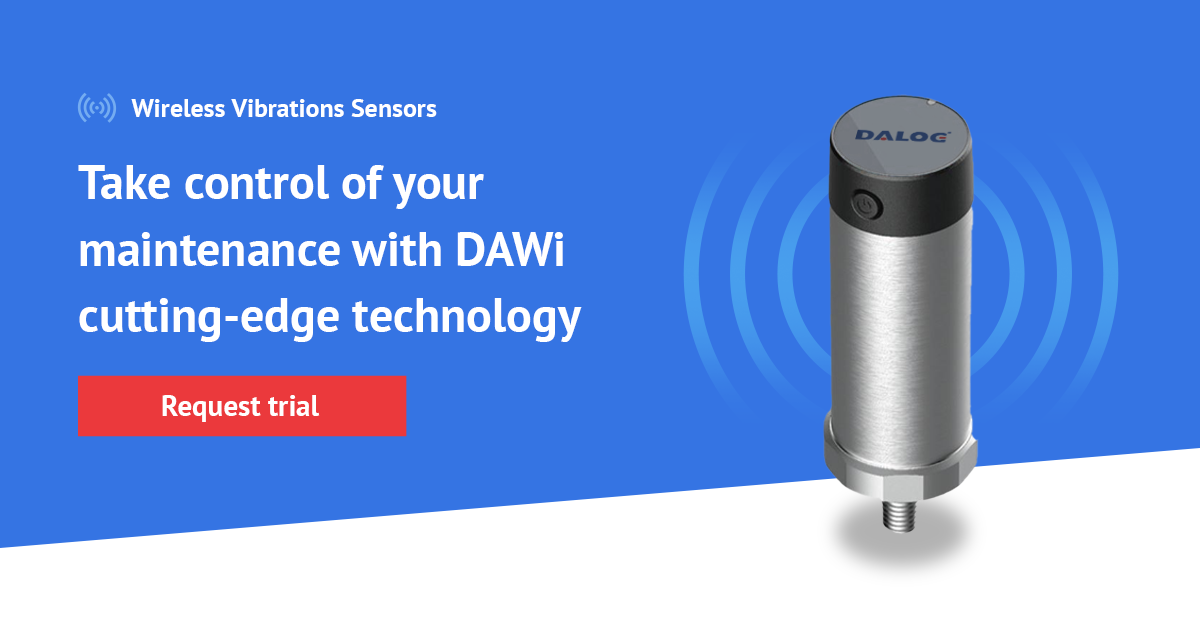5 Condition Monitoring Tactics to Consider in 2023 for Improved Plant Efficiency
As technology advances rapidly, it has become more important than ever for plants to operate at peak efficiency. Identifying potential equipment issues before they lead to expensive downtime or safety hazards is crucial in achieving this goal.
This is where condition monitoring tactics come into play. Using techniques such as remote condition monitoring, real-time monitoring and data analytics, vibration analysis, oil analysis, and thermography, you can proactively identify and mitigate potential equipment issues before they become significant problems.
The predictive maintenance market is also witnessing significant growth, driven by the increasing adoption of emerging technologies to gain valuable insights and the need to reduce maintenance costs, equipment failure, and downtime. According to Grand View Research, the global machine condition monitoring market is expected to grow at a compound annual growth rate of 7.3% from 2022 to 2030, reaching USD 4.83 billion by 2030.
Moreover, according to a study by Deloitte cited by AWS, predictive maintenance can help you mitigate unplanned downtime and prevent catastrophic asset failures. This approach can lead to a 25% increase in productivity, a 70% reduction in breakdowns, and a 25% reduction in maintenance costs.
Therefore, it became essential for plants to start experimenting with condition-monitoring tactics to enhance their operational efficiency.
Here is our selection of the top five tactics you can try in 2023:
- Remote Condition Monitoring
- Real-Time Monitoring and Data Analytics
- Vibration Analysis
- Oil Analysis
- Thermography
1. Remote Condition Monitoring
Remote condition monitoring is a technique that allows you to monitor the health and performance of critical assets from a remote location.
You can achieve this by using sensors installed on the equipment to transmit data wirelessly to a central server.
Your team of experts will then analyze the data and identify potential issues before they become serious problems.
Case Study: Wireless Vibration Monitoring in Cement Industry
With a strong return on investment of 20x after two months, a cement factory in Europe managed to save more than 500.000,00 Euros by using DALOG's wireless vibration monitoring system.
At the start of the project, DALOG's team of technicians assessed the machines' health belonging to a cement factory in Italy and discovered the following:
✔ Three assets were in healthy condition, with no action required.
✖ Ten assets indicated an ongoing machine anomaly that must be followed up on but is not critical.
✖ Four assets indicated an alert or dangerous condition that must be closely followed, and maintenance should start planning repair works.
What did we do?
- We mounted wireless vibration sensors radially at the kiln bearings and gateways, connecting sensors directly to the DALOG cloud via a cellular network.
- Total number of Machines Monitored: 17
- Total Number of Wireless Vibration Sensors: 76
- Area Covered: Pyro Processing
- We set clear goals with the plant team to reduce asset indication and alert conditions.
- We set regular reliability meetings with the maintenance and reliability team and DALOG to follow up and improve machine availability.
The result: A strong return on investment of 20x after two months and more than 500.000 Euros saved by using DALOG's wireless vibration monitoring system.
Learn more about wireless vibration sensors and how they can help you with your remote condition monitoring strategy: DAWi - Wireless Vibration Sensors.
2. Real-Time Monitoring and Data Analytics
According to CGOC, cited by Striim, 60% of data collected today has lost some or all of its business value. Moreover, according to a BCG survey, 72% of manufacturer executives find advanced analytics “to be important.” Despite this, only 17% of them have been able to get “satisfactory” value out of it.
Real-Time Monitoring and Data Analytics is a condition monitoring tactic that uses advanced software to monitor equipment performance and capture data in real-time continuously.
You can analyze the data using sophisticated algorithms and machine learning techniques to identify patterns and trends that you can use to predict potential issues before they occur. This allows you to take corrective actions on time, reducing downtime and maintenance costs.
According to Rockset, an oil and gas company was able to increase its profit margin by 12% to 15% after adopting real-time analytics. As per The Hackett Group, around 66% of supply chain leaders think that the use of analytics will be of critical importance to their operations in the future.
3. Vibration Analysis
Vibration analysis is a tactic used to detect mechanical problems in equipment by analyzing the vibrations generated during operation.
It works by installing sensors on the equipment to measure the vibrations generated during operation. This data is then analyzed to identify abnormal vibration patterns indicating a mechanical issue.
You can monitor remote machinery using wireless vibration sensors, which detect issues before they cause costly downtime. They are instrumental when it is difficult or expensive to install wired connections or in remote locations. The wireless nature of these sensors makes them highly convenient and cost-effective if you want to improve the overall efficiency of your operations.
Vibration analysis is an effective way to detect potential problems before they cause significant issues, such as equipment failure or downtime.
- Reduce machine downtime by predicting when equipment is likely to fail.
- Increase equipment lifespan by detecting problems early.
- Increase workplace safety and improve compliance.
- Save money by reducing the need for unplanned maintenance and optimizing your schedule.
- Have a clear understanding of your assets' status with real-time condition indicators.
4. Oil Analysis
According to Des-Case, 50 to 70% of all equipment failures can be directly traced to a lubrication-related issue, most of which can be found with oil analysis.
Oil analysis is a technique used to analyze the condition of lubricants in equipment, in order to detect potential issues.
It works by taking a sample of the oil from the equipment and analyzing it for various properties such as viscosity, acidity, and wear debris.
By analyzing the properties of the oil, it is possible to detect potential issues such as contamination, wear, and corrosion. Oil analysis effectively detects potential problems before they cause major issues, such as equipment failure or downtime.
According to Allied Market Research, the global oil condition monitoring market size was valued at $689.7 million in 2021 and is projected to reach $1.4 billion by 2031, growing at a CAGR of 7.5% from 2022 to 2031.
5. Thermography
Thermography is a technique used to detect temperature variations in equipment using thermal imaging cameras.
It works by detecting and measuring the infrared radiation emitted by objects in the equipment, which is then displayed as a thermal image.
Analyzing the thermal image makes detecting issues such as overheating, hot spots, or cold spots possible. Thermography is an effective way to detect potential problems before they cause significant issues.
Final Thoughts
Implementing condition monitoring tactics is essential for improved plant efficiency in 2023. With increased competition, cost savings, safety concerns, sustainability goals, and technological advancements, you must proactively identify potential equipment issues before they become significant problems.
You can consistently ensure that your plant is operating at peak efficiency and meeting production targets by using remote condition monitoring, real-time monitoring and data analytics, vibration analysis, oil analysis, and thermography.
Download and learn more about predictive maintenance from The Reliability Manager's Plan: How to Choose the Most Cost-Effective Solution for Predictive Maintenance.







